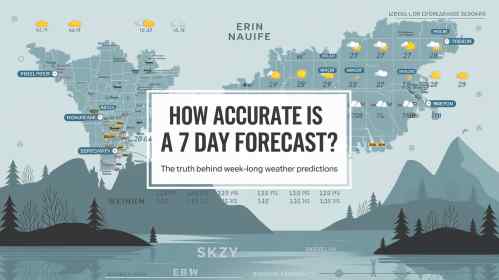Fire Weather Index (FWI) Calculator - fire weather tools
About Fire Weather Index (FWI) Calculator fire weather tools
Calculates the Fire Weather Index (FWI), a numerical rating of fire danger based on factors like temperature, humidity, wind speed, and recent rainfall.
Formula:
FWI calculation involves complex formulas based on FFMC, DMC, DC, and wind speed. Refer to official FWI documentation for detailed equations.
Tips:
The FWI is used by fire management agencies to assess fire danger and guide fire prevention and suppression efforts.
FWI values are typically higher during dry, hot, and windy conditions.
Understanding the FWI can help you be more aware of fire risks in your area.
Fun Fact:
The Canadian Forest Fire Danger Rating System, which includes the FWI, was developed in the 1960s and has since been adopted by many countries.
Related Article
When Weather Fans the Flames: A Guide to Fire Weather, Risk Assessment, and Safety
Wildfires, those powerful and often destructive forces of nature, are influenced by a complex interplay of factors, with weather playing a crucial role in their ignition, spread, and intensity.
This guide will explore the concept of fire weather, the tools and techniques used to assess fire danger, and essential safety measures to help protect yourself and your community from the threat of wildfires.
1. Fire Weather: Fueling the Flames
Fire weather refers to meteorological conditions that influence the likelihood and behavior of wildfires. Key fire weather factors include:
- Temperature: Higher temperatures increase the drying rate of fuels, making them more flammable.
- Humidity: Low humidity reduces moisture content in fuels, making them easier to ignite.
- Wind: Strong winds can spread embers, carry flames, and increase the rate of fire spread.
- Precipitation: Recent rainfall can moisten fuels, reducing flammability. Prolonged dry periods increase fire danger.
- Lightning: Lightning strikes are a common natural ignition source for wildfires.
2. Fire Danger Rating Systems: Assessing the Risk
Fire danger rating systems use weather data, fuel conditions, and other factors to assess the likelihood and potential severity of wildfires.
- Fire Weather Index (FWI): Developed in Canada, the FWI is a numerical rating system that combines various fire weather components, including temperature, humidity, wind speed, and fuel moisture codes (FFMC, DMC, DC).
- National Fire Danger Rating System (NFDRS): Used in the United States, the NFDRS provides a standardized assessment of fire danger across different regions.
- Other Systems: Various other fire danger rating systems exist worldwide, tailored to specific regions and fuel types.
3. Fuel Moisture: The Key to Ignition
Fuel moisture content, the amount of water present in vegetation and other flammable materials, is a crucial factor in fire ignition and spread.
- Dead Fuels: Dead fuels, such as dry grass, leaves, and branches, are more readily ignited than live fuels.
- Live Fuels: Live fuels, such as green trees and shrubs, have higher moisture content and are less flammable.
- Drying Rates: The rate at which fuels dry out is influenced by temperature, humidity, and wind.
4. Fire Behavior: Predicting the Unpredictable
Fire behavior refers to how a wildfire burns and spreads. It is influenced by:
- Fuel Type: Different fuels burn at different rates and intensities.
- Fuel Moisture: Drier fuels ignite and burn more readily.
- Topography: Slope, aspect (direction the slope faces), and elevation can influence fire spread.
- Weather: Wind speed and direction are the most significant weather factors affecting fire behavior.
5. Tools for Fire Weather Forecasting and Monitoring:
- Weather Stations: Collect data on temperature, humidity, wind speed and direction, and precipitation.
- Remote Automated Weather Stations (RAWS): Specialized weather stations located in wildfire-prone areas to provide real-time fire weather data.
- Weather Models: Forecast fire weather conditions, including wind patterns, temperature, and humidity.
- Fire Detection Systems: Use satellites, aircraft, and lookout towers to detect and monitor wildfires.
6. Wildfire Safety: Protecting Yourself and Your Property
- Be Aware of Fire Danger: Check fire danger ratings before engaging in outdoor activities that could ignite a wildfire.
- Create Defensible Space: Clear flammable vegetation and materials around your home to reduce the risk of wildfire damage.
- Prepare an Evacuation Plan: Know your evacuation routes and have a plan for what to do if a wildfire threatens your area.
- Follow Evacuation Orders: If ordered to evacuate, do so immediately.
- Stay Informed: Monitor local news and official alerts for updates on wildfires and evacuations.
Fire Weather: A Force to Be Respected
Wildfires are a natural part of many ecosystems, but they can also pose significant threats to human communities. By understanding fire weather, recognizing the factors that influence fire danger, and taking appropriate safety precautions, we can reduce the risk of wildfires and protect ourselves and our environment from their destructive potential.
Some related Fun Facts...
Fire Weather Fun Facts:
- Wildfires can create their own weather, generating strong winds and updrafts that can influence fire behavior.
- Eucalyptus trees are highly flammable due to their oily leaves, contributing to the intensity of wildfires in Australia.
- The hottest wildfires can reach temperatures of over 2,000 degrees Fahrenheit (1,093 degrees Celsius).
- Smoke from wildfires can travel thousands of miles, affecting air quality in distant regions.
- Prescribed burns, intentionally set fires under controlled conditions, can help reduce fuel loads and prevent larger wildfires.
- Firefighters use specialized weather tools, such as remote automated weather stations (RAWS), to monitor fire weather conditions.
- Fire danger rating systems help fire managers assess the likelihood and potential severity of wildfires.
- Climate change is increasing the frequency, intensity, and duration of wildfires in many parts of the world.
- Understanding fire weather is crucial for wildfire prevention, preparedness, and response.
- By working together, we can reduce the risk of wildfires and protect our communities and ecosystems.
Frequently Asked Questions
Fire Weather FAQ:
1. What is fire weather? Weather conditions that influence the ignition, spread, and intensity of wildfires.
2. What are the key fire weather factors? Temperature, humidity, wind speed and direction, precipitation (or lack thereof), and lightning.
3. What is the Fire Weather Index (FWI)? A numerical rating system that combines several fire weather factors to assess fire danger.
4. What is fuel moisture content? The amount of water present in vegetation and other flammable materials, a crucial factor in fire ignition and spread.
5. How does wind affect fire behavior? Wind can spread embers, carry flames, increase fire intensity, and change the direction of fire spread.
6. What is a red flag warning? Issued by the National Weather Service when critical fire weather conditions are expected.
7. How can I protect my home from wildfires? Create defensible space by clearing vegetation and flammable materials around your property.
8. What should I do if a wildfire threatens my area? Be prepared to evacuate, follow official instructions, and have an emergency plan in place.
9. What are some resources for fire weather information? Fire weather forecasts, fire danger maps, and websites of fire management agencies.
10. How can I help prevent wildfires? Be careful with fire, follow campfire safety guidelines, and report any signs of smoke or fire.







